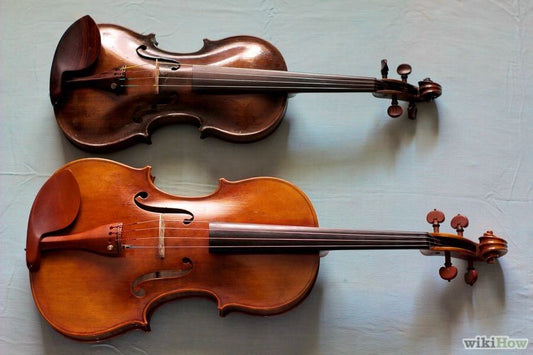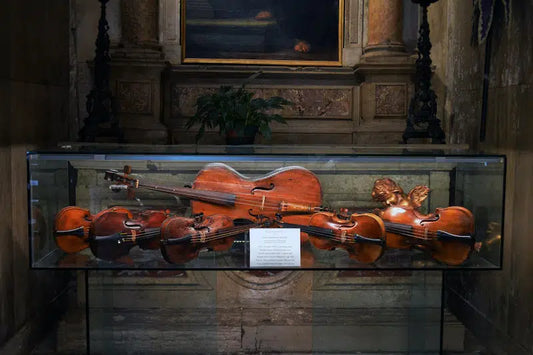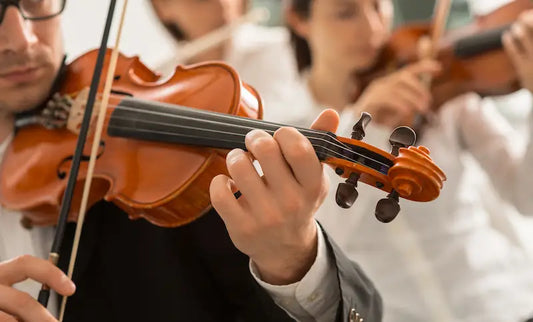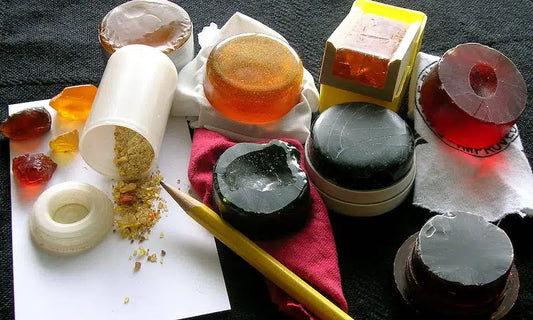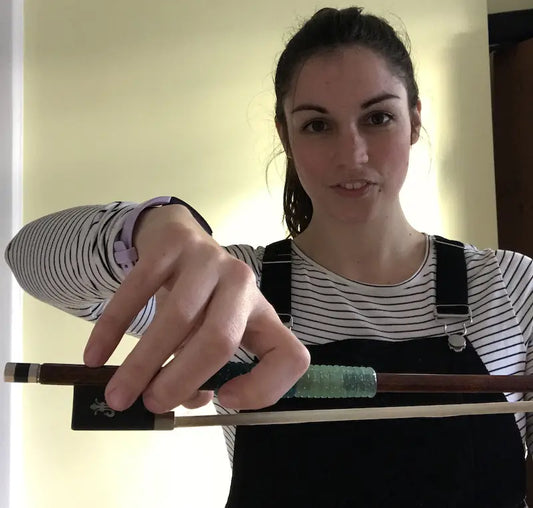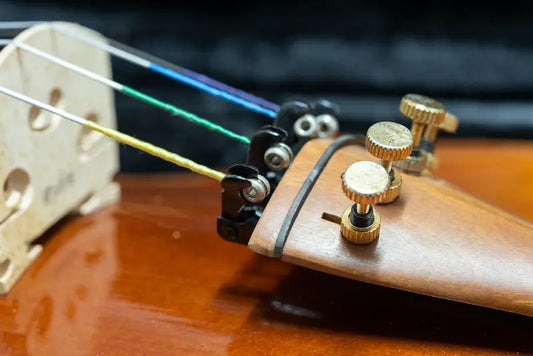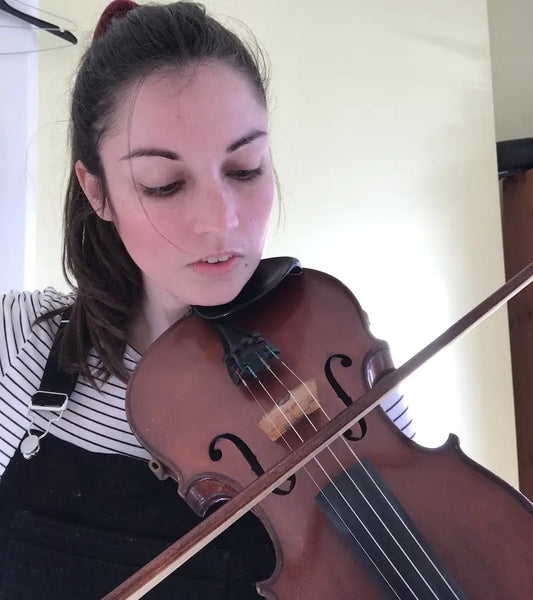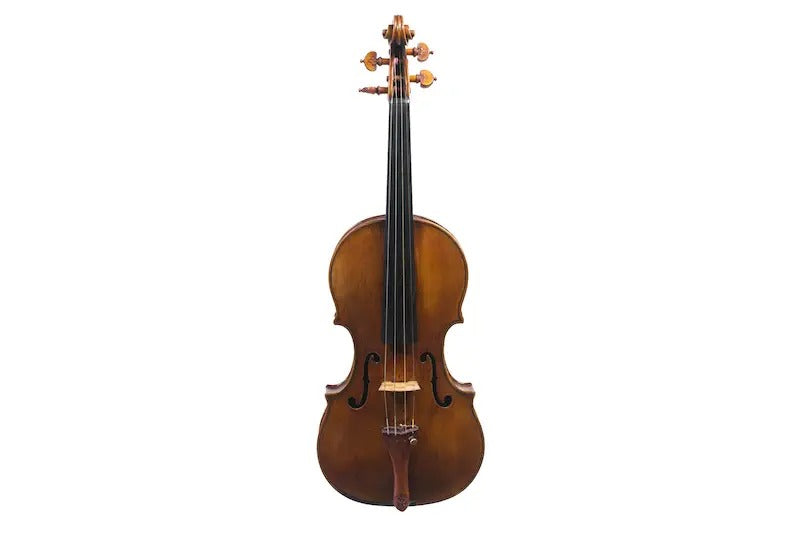
Violin Development History
Violin (French called Violin, English is Violin) is the smallest size and highest sounding instrument. Many people think that this instrument is old, but in fact the violin was invented relatively recently.
Many experts believe that the violin's original "ancestor" was the rebab in the Middle East, then it passed through trade to Spain, spread to Europe, and finally, it got its place. firmly in Italy.
In this article, we will explore how the violin evolved into what it is today and how it evolved in the modern world.
The Origin of the Violin
The first known stringed instrument, the Ravanastron, emerged in medieval India and was used to perform at the entertainment of kings and nobility. In the mid-17th century, the ravanastron was brought to the Middle East by traders, and from there the string instrument was widely used throughout Asia, Africa, and eventually Europe.
As for the rebab, this is a type of guitar that is diverse in construction and materials, but is generally divided into three types:
- Long, slender instrument with end peg
- Short, wide instrument with large resonance chamber
- Round, pear-shaped musical instrument
In Europe, the rebab has evolved into two types of musical instruments: the Rebec and the Lyra.
Branch of Rebeb

This branch of the Rebab may have been introduced to Europe during the Arab conquest of the Iberian peninsula. Rebecs have between 1 and 5 strings and are usually tuned to the fifth interval, like today's modern violins. This instrument is also played in such a way that the instrument is played on the left shoulder, with the right hand pulling the bow. However, unlike later musical instruments, such as vielles, gambas, or modern violins, which were made of many pieces of wood, the Rebec was carved from a single piece of wood.

branch of lyra
Dating to the Byzantine Empire in the 10th-12th centuries, the Lyra was a pear-shaped instrument held upright when played like a cello, played with a long, curved bow. The instrument has several "variants" that still exist today, mainly in the communities of the former Byzantine Empire, including Greece, Turkey, Bulgaria and Serbia.
The Italian Lyra variant called the Lira da Braccio is said to be particularly similar to the violin and is often considered the most "direct ancestor" of the modern violin.
Vielle

These oval instruments have three to five strings, swivel pegs, and are similar to violins. This type of instrument has two distinct faces that are connected by veins running along the edges.
Viola da Gamba

Perhaps the best known of the ancient stringed instruments, the Viola da Gamba is a Baroque period instrument still commonly played in Baroque orchestras and is the inspiration for many works now performed by music. other tools.
Viola da Gamba also known as violin or gambas appeared in the 15th century and was popular until the late Baroque period.
The debut of the modern violin in Italy

The oldest surviving violin is an instrument of the Cremonese violinist Andrea Amati. He is said to be a famous artist for making stringed instruments in Cremona - a city considered the center of violin production.
Amati is the patriarch of the Amati family, in addition to being a pioneer in this new form of musical instrument making. His sons, and most importantly his grandson, Nicolo Amati, were all accomplished violin makers, whose works are still considered masterpieces in the violin world.
Nicolo Amati's workshop was also the birthplace of another violin-making dynasty - the Guarneri family, it is known, Andrea Guarneri was one of Nicolo's apprentices.
Among many violinists, Antonio Stradivari is considered the master of the art of making violins. Despite great efforts to improve and use modern technology, until now, guitar builders have not been able to reproduce the absolute timbre of the instrument in the pattern of the Atradivari. The dimensions of his violin model have been considered by generations to be the most accurate.
Most workshops had a single master craftsman, with many apprentices and new luthiers working together to build smaller instruments to sell in bulk. A prominent example is Janek John Juzek, a Czechoslovak violin manufacturer and trader who sold violins around the world from the 1920s to the 1970s.
In fact, many students have learned to play the violin and learned to see the names of master artists engraved on the violin, and surprisingly, when searching on the internet, these violins are worth thousands of dollars. la!. However, experts in the world say that John Juzek only made a handful of his own masterpieces, and most of the guitars with his name on them sold out there are made by other luthiers. .
The violin is also available in a small version for students
Violins are always changing in size. Many early Italian violins were more "slender" than those of today. In the early 20th century, small violins were also found for small players.
The first person to create such small-sized violins was Shinichi Suzuki, who grew up in his father's violin factory in Nagoya, Japan. Suzuki realized that teaching children music at an early age, especially during the period of language acquisition, allows them to deepen their understanding and develop better musical skills.
However, if you want to teach violin to young children, you must have small violins. Therefore, Suzuki's father's factory produced a large number of small musical instruments, in fact, many students today use violins made by Suzuki Factory and we also see the name “Suzuki Co., Ltd. Violin.” on their instrument labels.
Violin in the world of modern musical instruments
The world of fine violin making is still going strong and is made all over the world by master instrument builders. Many of them studied in Cremona to begin their careers, as it is still considered the center of violin production in the world.
Today, the modern violin-making community is also filled with trade magazines, including Strad magazine, and numerous competitions where luthiers can showcase their impressive artistic talents.
The development of the electric violin

With the advent of electric amps in the early 20th century, musical instrument inventors began to find ways to convert musical instruments into electrical form. George Beauchamp was the inventor who patented the first electric guitar in 1931 and began selling electric violins in 1936. The first electric violins to hit the market had a hollow body, which resembled the shape of a guitar. a standard acoustic violin, however, at the time, very few violinists adopted the use of electric violins.
In 1958, Fender introduced their first electric violin to a large segment of jazz, rock and fusion performers. Today, there are countless electric violin shapes from many different manufacturers.
Later, although Beauchamp's company was dissolved, Fender and other manufacturers continued to create many new products for electric violins.
Today, the violin ranks third in the list of the most played instruments in the world. Not only is it played in classical music, but the violin is also considered an important part of some musical genres. Violin is quite easy to play, easy to learn and it is said to be great old music for children who love music.
See more:
